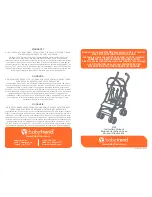
10-8
L90 LINE CURRENT DIFFERENTIAL SYSTEM – INSTRUCTION MANUAL
OVERVIEW
CHAPTER 10: THEORY OF OPERATION
10
Normally each relay detects frequency deviation, but if there is no current flowing nor voltage measurement available at a
particular relay, it is not be able to detect frequency deviation. In that case, the frequency deviation input to the loop filter
is set to zero and frequency tracking is still achieved because of phase locking to the other clocks. If frequency detection is
lost at all terminals because there is no current flowing, then the clocks continue to operate at the frequency present at the
time of the loss of frequency detection. Tracking resumes as soon as there is current.
The rotational rate of phasors is equal to the difference between the power system frequency and the ratio of the
sampling frequency divided by the number of samples per cycle. The correction is computed once per power system cycle
at each relay. For conciseness, we use a phasor notation:
Eq. 10-21
Each terminal computes positive sequence current:
Eq. 10-22
Each relay computes a quantity derived from the positive sequence current that is indicative of the amount of rotation
from one cycle to the next, by computing the product of the positive sequence current times the complex conjugate of the
positive sequence current from the previous cycle:
Eq. 10-23
The angle of the deviation phasor for each relay is proportional to the frequency deviation at that terminal. Since the clock
synchronization method maintains frequency synchronism, the frequency deviation is approximately the same for each
relay. The clock deviation frequency is computed from the deviation phasor:
Eq. 10-24
Note that a four-quadrant arctangent can be computed by taking the imaginary and the real part of the deviation
separately for the two arguments of the four-quadrant arctangent. Also note that the input to the loop filter is in radian
frequency which is two pi times the frequency in cycles per second; that is,
.
So the radian frequency deviation can be calculated simply as:
Eq. 10-25
10.1.11 Phase detection
There are two separate sources of clock phase information: exchange of time stamps over the communications channels
and the current measurements themselves (although voltage measurements can be used to provide frequency
information, they cannot be used for phase detection). Current measurements can generally provide the most accurate
information, but they are not always available and can contain large errors during faults or switching transients. Time-
stamped messages are the most reliable source of phase information but suffer from a phase offset due to a difference in
the channel delays in each direction between a pair of relays. In some cases, one or both directions can be switched to a
different physical path, leading to gross phase error.
The primary source of phase information is CPU time-tagged messages. If GPS compensation is enabled, GPS time stamps
are used to compensate for asymmetry. In all cases, frequency deviation information also is used when available. The
phase difference between a pair of clocks is computed by an exchange of time stamps. Each relay exchanges time stamps
with all other relays that can be reached.















































